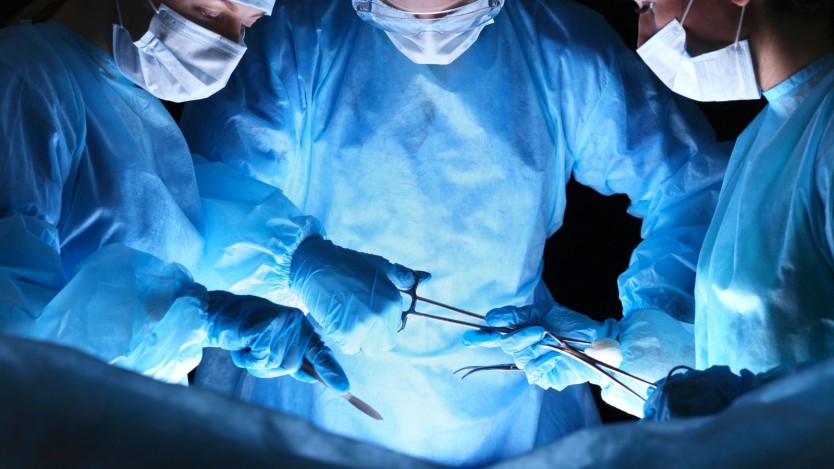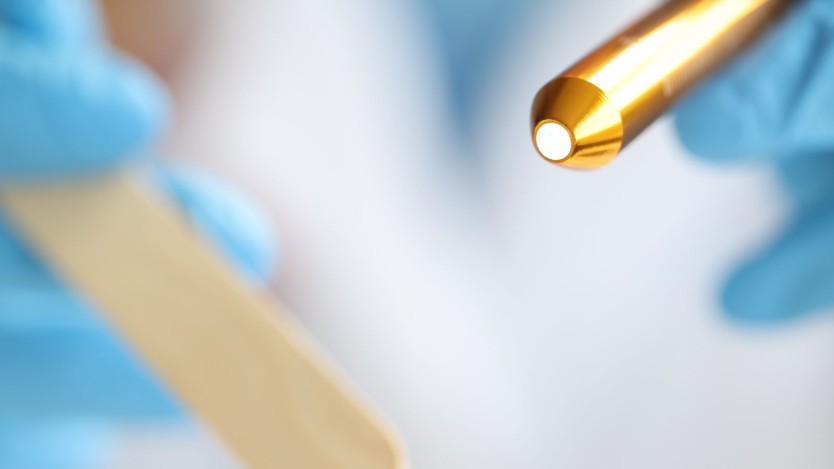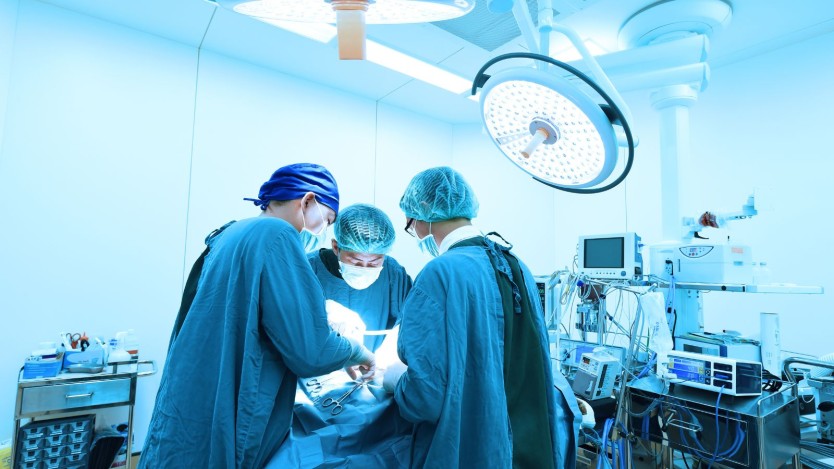Adenoidectomy: what it is, duration, cost and step by step

- What are adenoids?
- What is an adenoidectomy?
- Why is adenoidectomy surgery necessary?
- Who is a candidate for adenoidectomy?
- What does a preoperative study for adenoidectomy surgery consist of?
- Adenoidectomy surgery: step by step
- Duration of adenoid surgery
- Adenoidectomy surgery cost
- Request free surgical assessment consultation with a specialist
- Adenoids are glands present on each side of the nasopharynx, whose function is to maintain our immune system and protect us from germs present in the air we breathe.
- It is possible, especially during childhood, for adenoids to become hypertrophied, causing breathing problems, blocked ears or a sore throat. Initially, drugs are often used, but the definitive solution is adenoidectomy surgery.
- Adenoidectomy involves the removal of the adenoids, eliminating the problems caused by their enlargement and helping to restore the patient's quality of life, whether the patient is an adult or a child.
What are adenoids?
The adenoids are two glands located one on each side of the nasopharynx or cavum, above the soft palate and behind the nose, forming part of the functioning of our immune system along with the tonsils and lymph nodes.
This formation is responsible for generating antibodies and lymphocytes to fight infection and help the immune system protect us from various diseases caused by bacteria and viruses in the air we breathe in through our mouth or nose.
Normally, these glands develop from the seventh month of foetal life and continue to grow until we reach the age of four, decreasing in size during puberty.

Do you need surgery to remove adenoids?
Request a free and immediate appointment with our specialists in Otorhinolaryngology
It is also true that this tissue is very susceptible to infection and inflammation, as it is located at the confluence of various ducts such as the nasal, larynx and Eustachian tubes (ear ventilation ducts).
This can lead to problems such as, for example, obstruction of the nose, the appearance of abundant mucus in the throat and the blockage of ventilation in the ears. In these situations, various conditions can develop, such as noisy night breathing, bronchitis, sleep apnoea and otitis.

Although doctors initially recommend treating the abnormality with drugs to reduce the inflammation and, of course, eliminate the infection, this remedy does not always have an effect. This is why specialists recommend surgical treatment, adenoidectomy, as a definitive solution, which removes the adenoids and completely eliminates the symptoms caused by the abnormal development of the adenoids.
Adenoidectomy surgery stands out for being outpatient, i.e. you go home the same day of surgery, and for the simplicity of the procedure itself. It is a treatment that does not alter the immune system, so you will no longer be exposed to germs or consequent diseases.
What is an adenoidectomy?
Adenoidectomy is the surgery indicated for severe or persistent cases of adenoid hypertrophy, an abnormality that causes airway obstruction and mainly occurs in children between 3 and 4 years of age.
This is a surgical treatment during which the adenoid tissue is removed, eliminating the obstruction in the area.
Although it is a simple and quick procedure, it is performed under general anaesthesia to avoid pain and discomfort, as it is a rather uncomfortable process due to the difficult access to the area to be operated on.
It is also very common to combine adenoidectomy with tonsillectomy, removing the tonsils in the same procedure as well, ensuring the success of the operation.

Although the purpose of adenoidectomy is always the same, to remove the adenoids and eliminate the respiratory obstruction, there are different techniques for performing it, which we explain below:
- Cold cut with a curette or curette: the specialist uses a spoon-shaped instrument with which the adenoids are pressed, sectioned and removed. The bleeding is then stopped with the use of special compresses and the natural healing of the tissue is encouraged, without the need for sutures. This is the most commonly used method, as it avoids complications and normally ensures the successful removal of the adenoids completely.
- Electrocautery with Bovie suction: unlike the cold technique, electrocautery uses an instrument that simultaneously heats the adenoid tissue, removes it and stops the bleeding.
- Microdebrider: an instrument with a cutting blade coupled to a continuous suction system, it manages to section the glands without affecting the adjacent tissue and structures, reducing intraoperative bleeding and postoperative discomfort.
- Radiofrequency (Collation): these are instruments that use bipolar radiofrequency energy transmitted to sodium ions, which creates a thin film of plasma at a temperature of between 40º - 85º. In this way, the intercellular structure of the adenoids is destroyed and the glands are detached from the rest of the tissue to which they are attached.
Why is adenoidectomy surgery necessary?
As mentioned above, specialists resort to the surgical treatment of adenoidectomy to eliminate various serious symptoms affecting the respiratory and auditory system, especially in the case of children.
Although some conditions caused by inflammation and infection of the adenoids can be treated with antibiotics or nasal sprays, they usually do not solve the problem and even develop adverse effects that aggravate the pathology.
Otorhinolaryngologists therefore opt for surgical intervention.

This intervention can be carried out in both children and adults, always with a prior exhaustive diagnosis and under the expert advice of an ENT specialist, and is generally indicated in cases such as:
- When the adenoids are excessively enlarged and block the airway, causing symptoms such as snoring, difficulty breathing through the nose and episodes of respiratory failure during sleep.
- Frequent chronic ear infections, which do not respond to drug treatment. As well as enlarged adenoids leading to hearing loss (reduced hearing ability), or, in the case of children, severe absence from school due to the ailments or other difficulties in attending or participating in activities.
On the other hand, it is also advisable to opt for adenoidectomy when suffering from recurrent tonsillitis (inflammation and infection of the tonsils).
Read on to find out more about the conditions to be treated with adenoidectomy. If you identify with any of them or have noticed that this is the situation your child is going through, you can request a free surgical assessment consultation to meet with our ENT specialists, who will be able to recommend the best solution to solve the problem.
Request your surgical assessment appointment by clicking on the image below:

Do you need surgery to remove adenoids?
Request a free and immediate appointment with our specialists in Otorhinolaryngology
Who is a candidate for adenoidectomy?
In order to have an adenoidectomy yourself (or your child), it is necessary to consult an ENT specialist about the characteristics or particularities of this type of intervention.
Likewise, it is essential to diagnose the cause of the problems caused by the hypertrophy of the adenoids, the possibilities of their removal and to know how it may affect your quality of life and health in general.
Although you can imagine it, the cases in which a patient should undergo adenoid surgery are as follows:
- Chronic adenoiditis: when drug treatments are not effective and the pathology is prolonged, the only recommended solution is surgical treatment to remove the adenoids and possibly the removal of the tonsils during the same operation.
- Sleep apnoea and respiratory obstruction: when the adenoids and tonsils become inflamed, sleep apnoea syndrome usually appears, increasing nocturnal respiratory problems and causing rest problems and changes in character, which is why the specialist would recommend surgery to remove the adenoids.
- Tumour in the throat or nostrils: to solve problems of this type, normally associated with older adults, adenoidectomy surgery is absolutely necessary.
- Frequent infections: normally children, until their development is complete, can suffer frequent infections, up to 7 or more times in a year. This situation leads to absences from school or from work in the case of adults. To remedy this, it is advisable to resort to surgical treatment.
- Chronic otitis: when inflammation of the adenoids is prolonged over time, the ventilation of the auditory pathways is obstructed, causing otitis, oozing in the ears and even hearing loss. If this discomfort is prolonged over a long period of time, it can lead to serious hearing loss, so surgery is the best option for a solution.
What does a preoperative study for adenoidectomy surgery consist of?
As for any surgical intervention, before undergoing adenoidectomy, the specialists will carry out a preoperative study during which the following tests are performed:
- Blood tests: to rule out signs of infection or other data that could complicate the operation.
- Chest x-ray: this test helps to rule out respiratory problems and is usually performed only when the specialist deems it necessary.
- Electrocardiogram: allows the specialist to know the health of your heart.
Once the pre-operative procedure has been completed, you will have an appointment at the anaesthesiologist's office where the results of the tests will be reviewed and it will be determined whether you are fit to undergo the surgical procedure.
The anaesthesiologist will ask you about your medication, your lifestyle, etc. In this way, the anaesthesiologist will have detailed information to determine the level of anaesthesia required to perform the intervention, avoiding complications and ensuring the success of the surgical procedure.
Adenoidectomy surgery: step by step
When you arrive at the hospital, you must first hand in the required documentation at the admissions desk. After that, the healthcare staff will escort you to the operating theatre area where you or your child, depending on who the patient is, will be asked to undress and get dressed in surgical clothes.

Once you are ready, you will be taken to the operating theatre, where you will meet the surgeon with whom you had your consultation, the anaesthetist and a member of the nursing team.
Once you are on the operating table, the surgery will begin:
- First, the anaesthetist will place a line in your arm through which the anaesthetic will be administered, or you will be fitted with a mask through which you will inhale the anaesthetic.
- After the anaesthetic takes effect, the surgeon will place a small tool in your mouth to keep it open during surgery.
- The specialist will then remove the adenoid glands with a curette or curette, a spoon-shaped surgical instrument that allows the tissue to be removed. A tool may also be used to help cut the soft tissue. In addition, some surgeons use electrical techniques that heat the tissue, remove it and stop the bleeding, a method known as electrocautery. Another method uses radiofrequency energy in the same way as the previous technique, this method is called coblation.
- Finally, absorbent compresses are placed over the operated area to stop any bleeding and to be able to observe whether the extraction has been carried out correctly.
As you can see, it is a simple surgery with a fairly short recovery process, especially in the case of children.
Are you considering adenoidectomy surgery as the best option for you or your child?
You can request a free surgical assessment consultation with our specialists by clicking on the image below:

Do you need surgery to remove adenoids?
Request a free and immediate appointment with our specialists in Otorhinolaryngology
Duration of adenoid surgery
As we highlighted at the beginning of this article, adenoidectomy is a quick, very simple surgical procedure with a relatively short recovery period. Below you can see that the average time for each stage, both intraoperative and postoperative, is completed quickly:
Adenoidectomy surgery lasts approximately 15 - 20 minutes. Once the surgery is completed and you have recovered from the effects of the anaesthesia in the post-surgery room, you can go home the same day as the surgery.
As far as recovery is concerned, it is estimated that you will have to follow the instructions and care prescribed by the ENT specialist for the next 2 weeks, although the improvement begins to be noticeable after the first 24 hours following surgery.
As we mentioned, in some cases, it is necessary for the treatment to be complemented with the removal of the tonsils as well, by means of a tonsillectomy, therefore, the process will take approximately 40 minutes.
Adenoidectomy surgery cost
In the price of the adenoidectomy surgery that we provide at Operarme, everything necessary to carry out the operation with the greatest safety and effectiveness for you or your child is included, offering you an all-inclusive closed price for the adenoidectomy surgery for 1.890 €.
What does the price of adenoidectomy surgery include?
Contracting the surgery through Operarme to carry out the adenoidectomy treatment includes in its closed price all the elements necessary to carry out the surgery, which are listed below:
- Booking and use of the operating theatre.
- Post-operative care until medical discharge.
- Medical fees.
- Anaesthesiologist fees.
- Nursing team fees.
- Surgical material necessary for the operation.
However, if you would like to know more about adenoidectomy or what the service includes at Operarme, you can contact our patient service team via our contact form.
Request free surgical assessment consultation with a specialist
If you or your child has problems caused by persistent inflammation and infection of the adenoids and you are thinking that the most appropriate solution is the treatment of adenoidectomy, you can request a free surgical assessment consultation with our ENT specialist to assess your case (or your child's case), and then decide on the best option to eliminate once and for all the problems caused by the adenoids.
Make an appointment clicking in the following banner:

Do you need surgery to remove adenoids?
Request a free and immediate appointment with our specialists in Otorhinolaryngology
Medical disclaimer: All the published content in Operarme is intended to disseminate reliable medical information to the general public, and is reviewed by healthcare professionals. In any case should this information be used to perform a diagnosis, indicate a treatment, or replace the medical assessment of a professional in a face to face consultation. Find more information in the links below:
